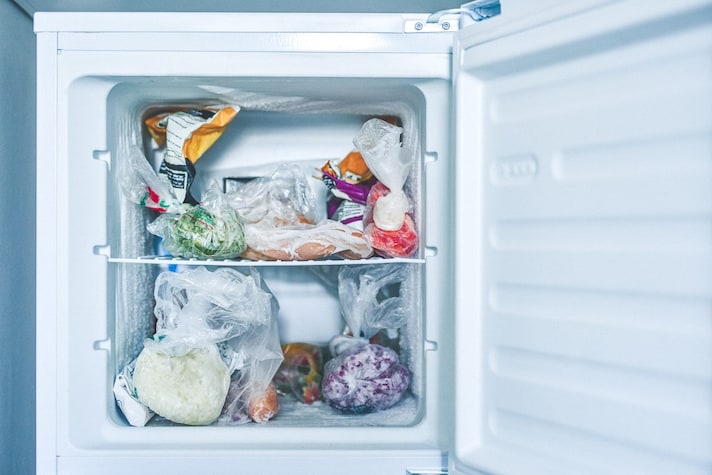
Packaged frozen foods are one of the most appreciated conveniences in everyday life. They allow us to always have ready meals, pre-cleaned vegetables, boneless fish, pizzas that cook in 10 minutes. And the best part is that all this is available in our freezer, at any time. But to ensure they maintain their qualities—flavor, texture, and food safety—it's essential to store them properly. Here are some tips and tricks for storing frozen foods most effectively.
Pay Attention to The Cold Chain
The first step is to be careful when purchasing. Frozen foods must always be kept at a temperature of at least -0.4°F/-18°C. When exposed to even brief temperature changes, they begin to lose quality and may become less safe. For this reason, it's important to buy them last when shopping, put them in a cooler if you plan to be away from home for a while, and put them in the freezer as soon as they arrive. Sometimes, even 20 or 30 minutes out of the refrigerator is enough to compromise a product.
Constant Temperature Freezer
Once you get home, frozen foods should be placed in the freezer immediately. It's important that it's set to the right temperature, at least -0.4°F/-18°C. If you're unsure, you can use a small freezer thermometer to check. Although most modern freezers automatically manage the temperature, it's best not to open them too often or leave them open for too long: every time you open the door, the internal temperature will rise, even if only temporarily.

Check the Packaging, Not Just the Expiration Date
Commercially frozen products are generally well protected by packaging designed to last. However, it's always a good idea to carry out a few checks: before purchasing, check that the packaging is intact, not swollen or damaged; if you see ice buildup or if the contents appear clumps, it may be a sign that they've been partially thawed and then refrozen. Even at home, if you notice changes in color or an unusual odor after opening the package, it's best to be safe.
Organizing the Freezer
You don't need a complex system to organize your freezer, but a little logic can help. Grouping items by type —for example, pizzas on one side, vegetables on the other, ready meals at the bottom—makes it easy to find what you're looking for and keeps track of what you already have at home. It's also helpful to arrange items with the closest expiration dates at the front or top, so you can use them up early.
Thawing Safely
Many supermarket frozen foods are designed to be cooked directly, without the need for thawing: the instructions on the package are always the best guide. When thawing is required, however, it should be done slowly in the refrigerator to prevent the growth of bacteria. In some cases, you can use the microwave, but only if the manufacturer recommends it.
An important rule: a thawed product should never be refrozen unless it's been thoroughly cooked first. So, if you thaw fish fillets or a ready-made dish and then change your mind, it's best to cook them and store them in the refrigerator for the next day.

A Valuable Ally, If Used Carefully
Grocery store frozen foods are designed to be safe, practical, and durable, but that doesn't mean they can be treated lightly. Small precautions when shopping, transporting, and storing them really make a difference. By following a few simple rules —and especially by carefully reading labels —you can be sure you're consuming good, safe, and convenient products whenever you need them.
The Shelf Life of Packaged Frozen Foods
Unlike home-frozen foods, commercially frozen products have a relatively long shelf life, thanks to rapid freezing and controlled packaging conditions. Generally, if kept at the right temperature, they can last several months, sometimes even more than a year. Here's a rough estimate of shelf life, to use as a reference when the expiration date is no longer legible:
- Vegetables: up to 12 months;
- Packaged fish: between 6 and 12 months;
- Ready meals: between 6 and 12 months;
- Pizzas and baked goods : 6-9 months;
- Ice cream: approximately 12 months;
- Salty snacks such as chips or kibble: best within 6-8 months.
Of course, the expiration date indicated on the package remains the main reference point.

;Resize,width=767;)
